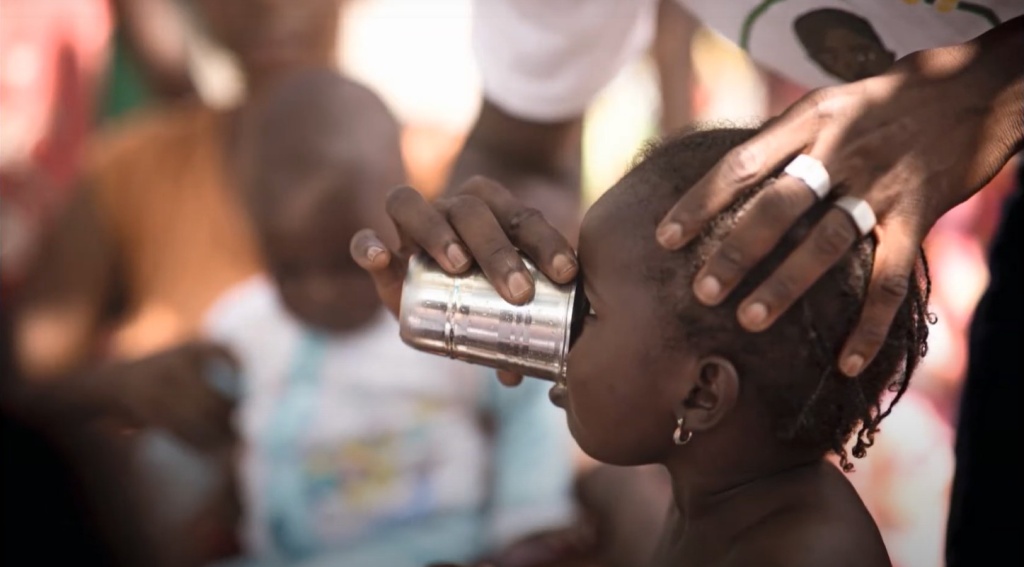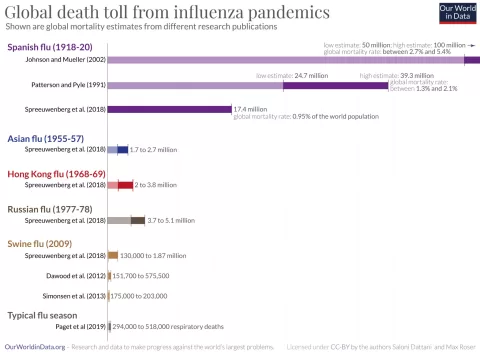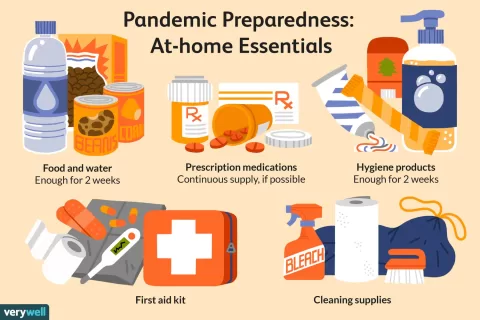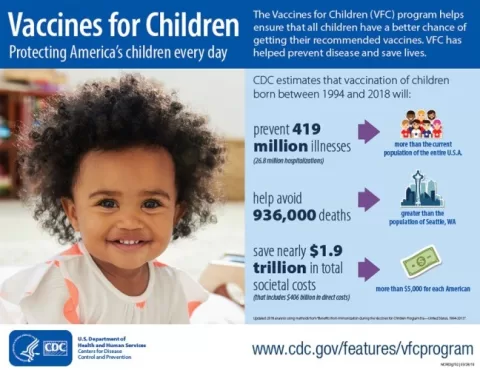Seasonal malaria chemoprevention (SMC) has emerged as a vital strategy to combat the rising malaria incidence in children, particularly in regions with high seasonal transmission. A recent randomized controlled trial in Uganda highlighted the efficacy of SMC using two different regimens, sulfadoxine-pyrimethamine combined with amodiaquine (SPAQ) and dihydroartemisinin-piperaquine, in significantly reducing malaria cases among children under five. The study, published in The Lancet Infectious Diseases, found that both regimens effectively lowered malaria incidence rates, showcasing their potential as a frontline defense against this deadly disease. However, concerns about antimalarial drug resistance, especially to sulfadoxine-pyrimethamine, emphasize the need for continuous evaluation and adaptation of malaria prevention strategies. By employing SMC, health officials aim to protect vulnerable populations from the devastating impacts of malaria, fostering a healthier future for children in endemic regions.
Seasonal malaria chemoprevention, often referred to as preventive treatment during peak transmission periods, plays a crucial role in safeguarding young children from malaria. This innovative approach involves administering antimalarial medications to at-risk populations, particularly in areas where malaria transmission is highly seasonal. Recent trials, such as the SMC Uganda trial, have tested different treatment regimens to assess their effectiveness in reducing malaria cases among children. The findings from these studies are essential, as they provide insights into the potential for new drugs like dihydroartemisinin-piperaquine to combat rising antimalarial drug resistance. By continually exploring and refining these prevention strategies, health authorities aim to enhance the overall health outcomes for children affected by this persistent threat.
Understanding Seasonal Malaria Chemoprevention (SMC)
Seasonal malaria chemoprevention (SMC) is a proactive approach designed to reduce the incidence of malaria, particularly among vulnerable populations such as children under five years old. This method involves administering antimalarial medications during the high transmission season, effectively providing a protective barrier against malaria infection. In Uganda, a recent trial has demonstrated the efficacy of SMC, particularly using the SPAQ regimen, which combines sulfadoxine-pyrimethamine with amodiaquine. The trial’s results indicate a staggering 92% reduction in malaria incidence, showcasing the potential of SMC strategies in malaria-endemic regions.
The trial not only highlighted the effectiveness of SMC in lowering malaria rates but also sparked discussions around antimalarial drug resistance. Researchers are concerned that the widespread use of sulfadoxine-pyrimethamine could lead to increased resistance, thereby undermining the long-term success of SMC. This ongoing evaluation of malaria chemoprevention strategies is crucial to ensure that interventions remain effective, especially in regions where malaria transmission is seasonal and intense.
Impact of Antimalarial Drug Resistance on Malaria Control
Antimalarial drug resistance poses a significant threat to malaria control efforts globally. In the context of the recent SMC trial in Uganda, concerns were raised about the potential for reduced efficacy of the SPAQ regimen due to emerging resistance to sulfadoxine-pyrimethamine. Although the trial showed impressive results, the presence of mutations associated with moderate resistance underscores the importance of continuous monitoring and adaptation of treatment regimens. With malaria incidence rates soaring in some areas, addressing drug resistance is paramount to safeguarding malaria control initiatives.
The implications of antimalarial resistance extend beyond treatment failures; they affect public health strategies and the overall goal of malaria elimination. The trial results indicated that dihydroartemisinin-piperaquine also significantly reduced malaria incidence, suggesting it may serve as a viable alternative to SPAQ in regions facing resistance issues. Continued research into alternative regimens is essential, as it helps to develop robust strategies capable of overcoming the challenges posed by drug-resistant malaria parasites.
Efficacy of Dihydroartemisinin-Piperaquine in Malaria Prevention
Dihydroartemisinin-piperaquine has emerged as a promising alternative in the fight against malaria, particularly in the context of seasonal malaria chemoprevention. In the recent Ugandan trial, this regimen demonstrated a remarkable 96% reduction in malaria incidence among children under five. The safety profile of dihydroartemisinin-piperaquine was also favorable, with no serious adverse events reported. These findings reinforce the importance of considering alternative treatments to ensure effective malaria prevention strategies, especially in areas where traditional regimens might be compromised by drug resistance.
Moreover, the high efficacy of dihydroartemisinin-piperaquine raises hopes for its integration into broader malaria control programs. As malaria transmission remains a public health challenge, employing regimens like dihydroartemisinin-piperaquine can enhance the impact of SMC initiatives. The ongoing studies and trials will provide further insights into its long-term effectiveness, paving the way for a more comprehensive approach to malaria eradication in high-burden areas.
Results of the SMC Uganda Trial: Key Findings
The SMC Uganda trial provided critical insights into the effectiveness of seasonal malaria chemoprevention using SPAQ and dihydroartemisinin-piperaquine. With an impressive enrollment of over 3,800 children, the trial’s results clearly illustrated the protective nature of these regimens against malaria. The recorded malaria incidence rates indicated a profound decrease compared to the control group, emphasizing the value of SMC in reducing malaria burden among children in high-transmission areas. Such evidence is crucial for policymakers looking to implement effective malaria prevention strategies.
Furthermore, the trial highlighted the importance of randomized controlled studies in evaluating public health interventions. The non-inferiority of dihydroartemisinin-piperaquine compared to SPAQ suggests that multiple treatment options should be made available, particularly in regions grappling with resistance issues. These findings not only contribute to the existing body of knowledge on malaria prevention but also serve as a foundation for future research and policy development aimed at combating this deadly disease.
Future Directions for Malaria Prevention Research
As malaria continues to pose a significant health threat, future research must focus on innovative approaches to prevention and treatment. The recent trial on seasonal malaria chemoprevention in Uganda serves as a stepping stone for further investigations into the efficacy of different antimalarial regimens. Researchers are now called to explore the long-term impacts of SMC, including the sustainability of dihydroartemisinin-piperaquine and the potential for combination therapies that could enhance efficacy and minimize resistance.
In addition to evaluating new treatment options, it is crucial to invest in monitoring and surveillance systems to detect emerging drug resistance early. This proactive approach will enable public health officials to adapt strategies promptly, ensuring that malaria prevention efforts remain effective. Collaborative efforts among researchers, policymakers, and healthcare providers will be essential in shaping the future landscape of malaria control and ultimately working towards the elimination of this disease.
The Role of Community Engagement in Malaria Control
Community engagement is a vital component of successful malaria control initiatives. In the context of seasonal malaria chemoprevention, educating parents and caregivers about the importance of SMC can significantly enhance treatment uptake and adherence. The Ugandan trial saw participation from numerous villages, underscoring the necessity of involving local communities in health interventions. When communities understand the benefits of SMC, they are more likely to support public health efforts and ensure that children receive the preventive treatment they need.
Furthermore, community-based approaches can facilitate better data collection and monitoring of malaria incidence rates. Local health workers often have the most accurate insights into the challenges faced by families, allowing for tailored interventions that address specific community needs. By fostering strong relationships between healthcare providers and community members, malaria prevention initiatives can be more effectively implemented, ultimately leading to a reduction in malaria cases and improved health outcomes for children.
Challenges in Implementing Seasonal Malaria Chemoprevention
Implementing seasonal malaria chemoprevention faces several challenges that must be addressed to ensure its success. One significant issue is the logistical complexity of delivering SMC treatments in remote and rural areas. With many villages in Uganda lacking proper healthcare infrastructure, access to medications can be limited, affecting the overall efficacy of the intervention. To tackle this, innovative solutions such as mobile clinics or partnerships with local organizations may be necessary to ensure that all eligible children receive timely treatment.
Another challenge lies in the continuous monitoring of malaria trends and drug resistance patterns. As seen in the recent trial, the presence of mutations associated with sulfadoxine-pyrimethamine resistance raises concerns about the sustainability of SMC with SPAQ. Addressing these issues requires ongoing research and collaboration among researchers, healthcare providers, and policymakers to adapt strategies as necessary. By recognizing and addressing the challenges of implementing SMC, stakeholders can work together to create effective and sustainable malaria prevention programs.
The Importance of Trial Data in Public Health Policy
Trial data play a crucial role in shaping public health policy, especially in the context of malaria prevention. The evidence gathered from the SMC Uganda trial provides essential insights into the effectiveness of different regimens in reducing malaria incidence among children. Policymakers can utilize this data to make informed decisions about which treatments to prioritize in malaria-endemic regions. These decisions are critical for allocating resources effectively and designing targeted interventions that can have a significant impact on public health.
Moreover, the dissemination of trial findings to the global health community can influence strategies beyond Uganda. As malaria remains a pressing concern in many countries, sharing successful outcomes and lessons learned can guide similar initiatives worldwide. By leveraging trial data, health organizations can foster collaborative efforts in research, funding, and implementation, ultimately advancing the global fight against malaria and improving health outcomes for vulnerable populations.
Integrating SMC into Broader Malaria Control Strategies
Integrating seasonal malaria chemoprevention into broader malaria control strategies is essential for maximizing its effectiveness. While SMC has demonstrated significant reductions in malaria incidence, it should not be viewed as a standalone solution. Instead, it should complement other interventions such as insecticide-treated nets, environmental management, and prompt treatment of malaria cases. A multi-faceted approach can create a more robust defense against malaria transmission, particularly in high-risk populations.
Furthermore, collaboration among various stakeholders—including government agencies, non-governmental organizations, and community leaders—will be vital for the successful implementation of integrated malaria control strategies. By pooling resources and expertise, these entities can ensure that SMC is delivered effectively and sustainably. Continuous evaluation and adaptation of these strategies will be necessary to respond to changing malaria epidemiology and drug resistance patterns, ultimately enhancing the overall impact of malaria prevention efforts.
Frequently Asked Questions
What is seasonal malaria chemoprevention (SMC) and how does it reduce malaria incidence in children?
Seasonal malaria chemoprevention (SMC) is an intervention aimed at reducing malaria incidence in children, particularly in regions with highly seasonal malaria transmission. A recent study in Uganda demonstrated that SMC using two regimens—sulfadoxine-pyrimethamine combined with amodiaquine (SPAQ) and dihydroartemisinin-piperaquine—effectively reduced malaria cases in children under five. The study reported a 94% and 96% reduction in malaria incidence for SPAQ and dihydroartemisinin-piperaquine respectively.
What were the findings of the SMC Uganda trial regarding antimalarial drug resistance?
The SMC Uganda trial highlighted concerns about antimalarial drug resistance, particularly to sulfadoxine-pyrimethamine. While the trial showed significant effectiveness of both SPAQ and dihydroartemisinin-piperaquine in reducing malaria incidence, it also noted the presence of mutations linked to moderate resistance to sulfadoxine-pyrimethamine. Continuous monitoring of resistance patterns is essential to maintain the effectiveness of SMC.
How does dihydroartemisinin-piperaquine compare to SPAQ in seasonal malaria chemoprevention?
In the context of seasonal malaria chemoprevention, dihydroartemisinin-piperaquine was found to have a protective effectiveness that is non-inferior to that of the SPAQ regimen. The hazard ratio for dihydroartemisinin-piperaquine was 0.04, showing a 96% reduction in malaria incidence, compared to 94% for SPAQ. This suggests that dihydroartemisinin-piperaquine is a viable alternative to SPAQ in areas affected by sulfadoxine-pyrimethamine resistance.
What safety concerns were raised during the SMC trial in Uganda?
During the SMC Uganda trial, no serious or fatal adverse events were reported for either the SPAQ or dihydroartemisinin-piperaquine groups. The study indicated that both regimens are safe for use in children, further supporting their implementation as effective seasonal malaria chemoprevention strategies.
Why is ongoing monitoring of drug resistance important for seasonal malaria chemoprevention?
Ongoing monitoring of drug resistance is crucial for seasonal malaria chemoprevention to ensure the long-term effectiveness of treatments like SPAQ and dihydroartemisinin-piperaquine. The emergence of drug-resistant malaria parasites can undermine the success of SMC efforts, making it essential to adapt strategies as resistance patterns evolve in affected regions.
What impact did seasonal malaria chemoprevention have on malaria incidence rates in the Uganda study?
In the Uganda study, seasonal malaria chemoprevention significantly lowered malaria incidence rates in children. The incidence rates recorded were 0.90 cases per 100 person-months for the SPAQ group, 0.80 for dihydroartemisinin-piperaquine, and a stark 18.26 for the control group, highlighting the effectiveness of SMC in preventing malaria.
| Key Point | Details |
|---|---|
| Study Overview | A randomized controlled trial conducted in Uganda in 2022 with children under 5. |
| Treatment Regimens | Children received either SPAQ or dihydroartemisinin-piperaquine, with a control group. |
| Participants | 3,881 children were enrolled from 380 villages. |
| Malaria Incidence Rates | Incidence rates: SPAQ 0.90, dihydroartemisinin-piperaquine 0.80, control 18.26 cases per 100 person-months. |
| Effectiveness | Both treatments significantly reduced malaria risk by 94% and 96% respectively. |
| Safety | No serious adverse events reported in either treatment group. |
| Resistance Concerns | Ongoing monitoring of drug resistance is essential for long-term SMC effectiveness. |
Summary
Seasonal malaria chemoprevention (SMC) is crucial in reducing malaria incidence among children in regions with highly seasonal transmission, as demonstrated by a recent study in Uganda. This trial highlights the efficacy of SMC using different drug regimens, achieving significant reductions in malaria cases without safety concerns. The findings underscore the importance of continuous monitoring for drug resistance to ensure that SMC remains an effective strategy against malaria in vulnerable populations.
The content provided on this blog (e.g., symptom descriptions, health tips, or general advice) is for informational purposes only and is not a substitute for professional medical advice, diagnosis, or treatment. Always seek the guidance of your physician or other qualified healthcare provider with any questions you may have regarding a medical condition. Never disregard professional medical advice or delay seeking it because of something you have read on this website. If you believe you may have a medical emergency, call your doctor or emergency services immediately. Reliance on any information provided by this blog is solely at your own risk.








